Instructions for use of mouse cardiotrophin 1 (CT-1) elisa kit
The company's professional enzyme-free services for many years: ELISA kits, standard products | reference materials, biological reagents, antibodies, culture media, serum, pharmaceutical intermediates, APIs and other scientific research reagents, quality assurance, low prices, national key laboratories and domestic The universities have long-term designated suppliers, with strong technical force and a group of professional technicians and sales personnel, providing comprehensive technical support and perfect after-sales service for our customers. Welcome to inquire!
Instructions for use of mouse cardiotrophin 1 (CT-1) elisa kit
Elisa kit specifications: 48-well configuration / 96-well configuration
Standard diluent: 1.5ml × 1 bottle
Enzyme label reagent: 3 ml × 1 bottle (48) / 6 ml × 1 bottle (96)
[Mouse Cardiotrophin 1 (CT-1) elisa kit] This reagent is for research use only
Calculation:
Taking the concentration of the standard as the abscissa and the OD value as the ordinate, draw a standard curve on the coordinate paper, and find the corresponding concentration from the standard curve according to the OD value of the sample; multiply by the dilution factor; Calculate the linear regression equation of the standard curve with the OD value, substitute the OD value of the sample into the equation, calculate the sample concentration, and multiply it by the dilution factor to obtain the actual concentration of the sample.
Kit composition:
Sealing film: 2 pieces (48) / 2 pieces (96)
Instructions: 1 copy
Sealed bag: 1
Standard product: 2700ng / L 0.5ml × 1 bottle 0.5ml × 1 bottle Store at 2-8 ℃
Enzyme-coated plate: 1 × 48 1 × 96 2-8 ℃
Sample diluent: 3ml × 1 bottle 6 ml × 1 bottle Store at 2-8 ℃
Developer A solution: 3ml × 1 bottle 6 ml × 1 bottle Store at 2-8 ℃
Developer B solution: 3ml × 1 bottle 6 ml × 1 bottle Store at 2-8 ℃
Stop solution: 3ml × 1 bottle, 6ml × 1 bottle, store at 2-8 ℃
Concentrated washing solution: (20ml × 20 times) × 1 bottle (20ml × 30 times) × 1 bottle stored at 2-8 ℃
Experimental principle:
This kit uses the double antibody sandwich method to determine the level of mouse cardiotrophin 1 (CT-1) in the specimen. Microporous plates were coated with purified mouse cardiotrophin 1 (CT-1) antibody to make solid-phase antibodies. Cardiotrophin 1 (CT-1) was added to the monoclonal antibody-coated microwells in turn, followed by HRP-labeled Cardiotrophin 1 (CT-1) antibody binds to form an antibody-antigen-enzyme-labeled antibody complex, and after thorough washing, the substrate TMB is added for color development. TMB is converted into blue under the catalysis of HRP enzyme, and into the final yellow under the action of acid. The color depth is positively correlated with cardiotrophin 1 (CT-1) in the sample. The absorbance (OD value) was measured with a microplate reader at a wavelength of 450 nm, and the concentration of mouse cardiotrophin 1 (CT-1) in the sample was calculated by a standard curve.
Purpose: This kit is used to determine the content of cardiotrophin 1 (CT-1) in mouse serum, plasma and related liquid samples.
Pledge:
Delivery period: payment to delivery.
Free technical consultation and guidance during working hours. Please inquire
Provide customers with sample inspection services to maximize the effectiveness of the experimental results (free substitute testing).
Storage conditions and validity period:
Kit storage: 2-8 ℃ | Validity: 6 months
[Mouse Cardiotrophin 1 (CT-1) elisa kit] Sample processing and requirements:
1. Serum: room temperature blood coagulates naturally for 10-20 minutes, centrifuged for about 20 minutes (2000-3000 rpm). Collect the supernatant carefully and centrifuge again if a precipitate appears during storage.
2. Plasma: EDTA or sodium citrate should be selected as anticoagulant according to the requirements of the specimen. After mixing for 10-20 minutes, centrifuge for about 20 minutes (2000-3000 rpm) Collect the supernatant carefully. If a precipitate forms during storage, it should be centrifuged again.
3. Urine: collected in a sterile tube and centrifuged for about 20 minutes (2000-3000 rpm). Collect the supernatant carefully. If a precipitate forms during storage, centrifuge again. Pleural and ascites, cerebrospinal fluid reference implementation.
4. Cell culture supernatant: When detecting secreted components, collect with a sterile tube. Centrifuge for about 20 minutes (2000-3000 rpm). Collect the supernatant carefully. When detecting the components inside the cells, the cell suspension is diluted with PBS (PH7.2-7.4), the cell concentration reaches about 1 million / ml. Through repeated freezing and thawing, the cells are destroyed and the intracellular components are released. Centrifuge for about 20 minutes (2000-3000 rpm). Collect the supernatant carefully. If a precipitate forms during storage, it should be centrifuged again.
5. Organize the specimen: after cutting the specimen, weigh it. Add a certain amount of PBS, PH7.4. Quickly freeze and save with liquid nitrogen for later use. After the specimen melts, it still maintains a temperature of 2-8 ° C. Add a certain amount of PBS (PH7.4) and homogenize the specimen by hand or homogenizer. Centrifuge for about 20 minutes (2000-3000 rpm). Collect the supernatant carefully. After aliquoting, a portion is to be tested, and the rest is frozen for future use.
6. The specimen should be extracted as soon as possible after collection. The extraction should be carried out according to relevant literature. The experiment should be carried out as soon as possible after extraction. If the test cannot be performed immediately, the specimen can be stored at -20 ℃, but repeated freezing and thawing should be avoided.
7. The sample containing NaN3 cannot be detected because NaN3 inhibits the activity of horseradish peroxidase (HRP).
Steps
1. Dilution and loading of standard products: set 10 standard wells on the enzyme-coated plate, add 100 μl of the standard products in the first and second wells, and then add the standard products in the first and second wells. 50μl of diluent, mix well; then take 100μl from the first well and the second well and add them to the third and fourth wells respectively, then add 50μl of standard dilution solution to the third and fourth wells respectively, mix well; Then take 50μl each in the third and fourth wells and discard them, then add 50μl each to the fifth and sixth wells, and then add 50ul of the standard dilution solution to the fifth and sixth wells respectively, and mix well; After mixing, take 50μl from the fifth and sixth wells and add them to the seventh and eighth wells respectively. Then add 50μl of the standard dilution solution to the seventh and eighth wells respectively. Take 50μl from the eight wells and add them to the ninth and tenth wells. Then add 50μl of the standard dilution solution to the ninth and tenth wells. After mixing, take 50μl from the ninth and tenth wells and discard. (After dilution, the volume of each well is 50 μl, and the concentrations are 1800 ng / L, 1200 ng / L, 600 ng / L, 300 ng / L, and 150 ng / L).
2. Adding samples: set up blank wells (the blank control wells do not add samples and enzyme reagents, the rest of the steps are the same) and the sample wells to be tested. Add 40μl of sample diluent to the test sample well on the enzyme-coated plate, and then add 10μl of the sample to be tested (the final dilution of the sample is 5 times). Add the sample and add the sample to the bottom of the well of the microplate, try not to touch the wall of the well, shake gently to mix.
3. Incubation: Seal the plate with a sealing plate and incubate at 37 ° C for 30 minutes.
4. Mixing solution: Dilute 30 times (20 times of 48T) concentrated washing solution with distilled water 30 times (20 times of 48T) and then reserve.
5. Washing: Carefully peel off the sealing film, discard the liquid, spin dry, fill each well with the washing liquid, let it stand for 30 seconds and then discard, repeat this 5 times, pat dry.
6. Add enzyme: add 50μl of enzyme label reagent to each well, except blank well.
7. Incubation: The operation is the same as 3.
8. Washing: The operation is the same as 5.
9. Color development: add 50μl of developer A to each well, then add 50μl of developer B, mix gently, and develop at 37 ° C in the dark for 15 minutes.
10. Termination: Add 50μl of stop solution to each well to terminate the reaction (at this time, the blue color turns to yellow).
11. Determination: Measure the absorbance (OD value) of each well in sequence with the blank air conditioner at zero and 450 nm wavelength. The measurement should be carried out within 15 minutes after adding the stop solution.
ã€Mouse Cardiotrophin 1 (CT-1) elisa kit】 Notes:
1. The kit should be taken out of the refrigerated environment and should be equilibrated at room temperature for 15-30 minutes before use. If the enzyme-coated plate is unsealed after opening, the strip should be stored in a sealed bag.
2. Crystals may be precipitated in the concentrated washing liquid, which can be heated and dissolved in the water bath during dilution, and the results will not be affected during washing.
3. The sampler should be used at each step of sample addition, and the accuracy should be regularly checked to avoid test errors. It is best to control the sampling time within 5 minutes. If there are many specimens, it is recommended to use a volley gun to add samples.
4. Please make the standard curve at the same time of each measurement, it is better to make the complex hole. If the content of the substance to be tested in the specimen is too high (the OD value of the sample is greater than the OD value of the first well of the standard well), please dilute it with a certain multiple of the sample diluent (n times) before measuring, and finally multiply by the total dilution Multiple (× n × 5).
5. The sealing film is limited to one-time use to avoid cross contamination.
6. Please keep the substrate away from light.
7. Strictly follow the instructions, and the test results must be determined based on the reading of the microplate reader.
8. All samples, washing liquid and various wastes should be treated as infectious agents.
9. The components of different batches of this reagent shall not be mixed.
10. If there is any difference with the English manual, the English manual shall prevail.
Kit performance:
1. The correlation coefficient R between the linear regression of the sample and the expected concentration is above 0.95.
2. The batch and approval shall be less than 9% and 11% respectively
examination range:
0.2IU / L-6IU / L
One of Aluminum Ladder - Multipurpose Ladder is very popular all over the world because of it`s special and traditional design.It conforms to EN131. Strong aluminum construction with safety lock steel hinges .It`s pretty steady with twin stabiliser bars featuring large rubber feet.
Multipurpose ladder can be used by many shapes while it`s easy to fold and extend .The max load of multipurpose ladder is 150KGS. You can climb to roof by it`s straight ladder . You can use it as bridge while tools can be putted on the platform . And it`s can be A type shape ladder . Which types of multipurpose ladder you choose .Our multipurpose ladder would be the most convenient assistant for your life ..
More details as follows :
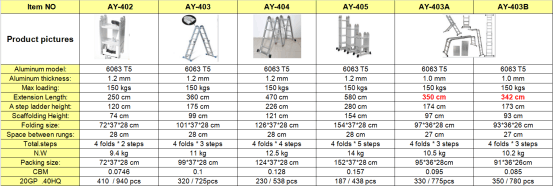
Accessories:
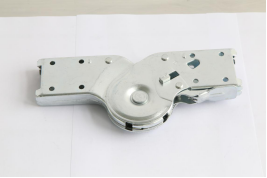
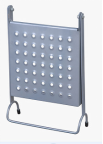
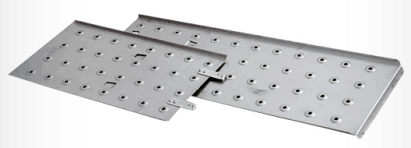


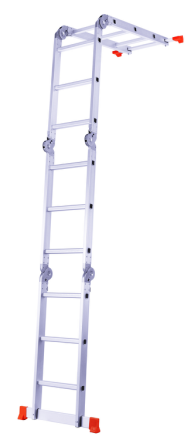

FAQ:
Q: Are you factory or trading company ?
A: We are factory , exported foreign over decade with rich experiences .
Q: We can change the color of the rubber cover ?
A: yes , the regular is black , you also choose other color .
Q:What`s the MOQ ?
A: 50 PCS.
Q: Can I have a sample ?
A: It`s ok .
Q:What`s your price ?
A: It`s depends on your demands, quantity , we can offer you lowest price .
Q:What`s your delivery time ?
A: Sample order : 3days , bulk order : 23-25days .
Q: Can we use our logo or brand on the package ?
A: yes , OEM is ok .
Q: What`s the payment :
A: (1) T/T: 30% deposit be paid in advance , the 70% of total payment see the copy of B/L.
(2) L/C it`s ok .
(3) Cash also ok .
More inquires or questions , plz feel free to contact us !
Welcome to visit our factory !
Multipurpose Ladder
Multipurpose Ladder,Aluminum Multipurpose Ladder,Aluminum Multifunction Ladder,Multipurpose Ladder With Hinges
Yongkang Aoyi Industry&Trade Co., Ltd. , https://www.aoyiladder.com